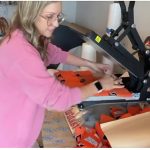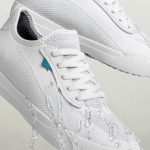More than 66 million Americans used a health club in 2016, a record-high since IHRSA began tracking health club consumer statistics in 1987. The number of individual members totaled 57.3 million, up 3.6 percent from 55.3 million in 2015. Members frequented their health club an average of 106 visits in 2016, also an all-time high. Of the 296.6 million Americans age 6 and older, 19.3 percent were health club members in 2016.
“Consumers continue to rely on health clubs as the primary outlet for physical activity and health goals,” said Joe Moore, IHRSA’s president and CEO. “Increased participation in fitness activities helped fuel growth in memberships and utilization as total club visits surpassed 5 billion for the fifth consecutive year.”
Based on a study conducted by The International Health, Racquet & Sportsclub Association (IHRSA) as part of the Physical Activity Council (PAC), results show that nearly one out of five Americans belonged to at least one of the 36,540* health clubs nationwide. Since 2009, membership has grown by 26.3 percent, while the total number of club-goers has increased by 26.5 percent.
At 36,540, the number of health club facilities increased by just 1 percent over the previous year. In 2016, U.S. health club industry revenue increased to $27.6 billion, up from $25.8 billion in 2015, an improvement of 7.2 percent.
“Industry revenues continue to grow as members utilize their clubs more frequently with many investing in multiple health club options,” said Jay Ablondi, IHRSA’s executive vice president of global products. “While the increase in the number of fitness centers has slowed, club operators have adeptly responded to consumer needs and demands for variety in fitness programs and training formats.”
Later this year, IHRSA will release the 2017 IHRSA Health Club Consumer Report, which will provide analysis of health club consumer growth, demographics, utilization, and trends as well insights and applications for club operators. The 2016 edition is available at ihrsa.org/consumer-report.
Methodology
Each year, IHRSA conducts an annual health club consumer study as part of the Physical Activity Council (PAC). The PAC is made up of eight of the leading sports and manufacturer associations that are dedicated to growing participation in their respective sports and activities. During 2016 and early 2017, a total of 24,134 online interviews were carried out with a nationwide sample of individuals and households from the US Online Panel of over one million people operated by IPSOS/Synovate. A total of 11,453 individual and 12,681 household surveys were completed. The total panel is maintained to be representative of the US population for people ages six and older. Oversampling of ethnic groups took place to boost responses from typically under responding groups.
*Note: InfoUSA, Inc. provides data related to the total number of health and fitness businesses with training equipment using the Industry’s SIC code of 7991 as listed under the Yellow Pages. The most recent recession has resulted in consolidation of club locations and the closure of weaker-performing clubs, while still allowing for new club locations to emerge in underserved markets as well as areas with increasing demand for fitness centers and services. Recent years have also seen the rise of niche and theme-oriented facilities and continued growth of convenient, always open (e.g. 24 hour), and affordable fitness locations. Using InfoUSA as a benchmark, IHRSA estimates there are a total of 36,540 health club facilities in the United States as of January 1, 2017. This number does not include the total number of studio locations in the U.S. as not all niche and theme-oriented fitness businesses may be classified a separate SIC Code.
The International Health, Racquet & Sportsclub Association is a not-for-profit trade association representing health and fitness facilities, gyms, spas, sports clubs and suppliers worldwide.














